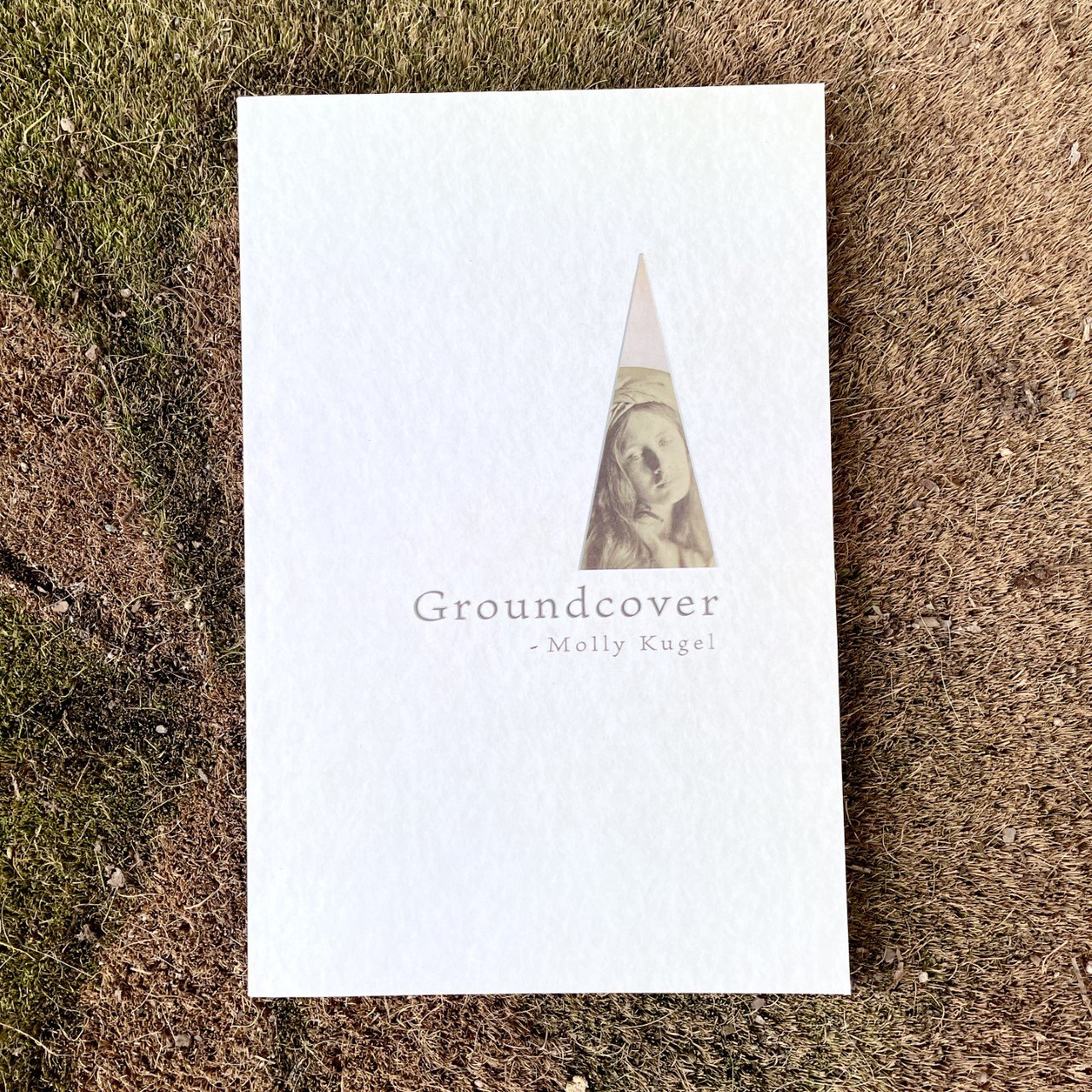GROUNDCOVER, Molly Kugel. Tolsun Publishing, Inc., 406 S. Leroux St., Flagstaff, AZ 86001, 2022, 96 pages, $20 paper, www.tolsunbooks.com.
If collections of poems are plots of land, then Molly Kugel’s debut collection, Groundcover, is my type of terrain. There is botanical expertise here but only as a twining with the speakers’ memories. The past coils around the present; history covers the ground and the ground covers something else. Most of the collection’s poems are free verse in a variety of stanza formations between one and two pages long. Divided into four sections—dry garden, spring and summer, fall and winter, spring and summer—the poems in Groundcover are cyclical, seasonal, and samples of feminist ecologies.
Throughout the collection, Kugel offers images of some of the people who have shaped current understandings of botany and ecology; these images are not fast and fleeting but quiet and compelling. In the poem “Anna Atkins,” the first woman to make a photograph and first person to illustrate plants through photographs is at the edge of a river collecting plants. Kugel writes, Where did you begin and the specimen / end as you listened to the underwater forest whisper. In the poem “Home Studies in Nature,” the naturalist Mary Treat, who corresponded with Darwin, ventures into her own back yard where, Kugel imagines, Treat’s work with the natural world redefine[s] the line of home and wood. Kugel cites Treat’s writing published in 1885: the more I limit myself to a small area, / the more novelties and discoveries / I make in natural history. And in “Jane Colden below the guardrail,” Colden, the first woman botanist in America whose 1758 manuscript was, Kugel explains in “Notes” following the poems, the most comprehensive description of flora in the region written by anyone before the nineteenth century, also ventures:
At first you stayed fenced in your mother’s garden
drew only the common dandelion,
the outline of the hollyhock;
then something grabbed hold of you.
You tied your bonnet early that morning
And went out in search of the wildings.
Colden’s work ceased when she married, and she died young, in childbirth. In Groundcover, these women who have built our foundational knowledge about botany and ecology show us how to look for boundary lines, to study where they come from and, when necessary, to cross them.
Growing between the poems of ancestors are poems about contemporary identities as sister, daughter, and mother. In “Leaf, moon, stone,” the speaker watches her child discover his curiosity for a leaf, as his hand only barely grew over the edges while he traced, tending to it. He teaches his mother that leaves are pronounced like moon and her memory of this young leafing moon grows into a later memory, the day that he was bereft in someone’s office because, she remembers to him, Some boys have hurt you. The quiet gentleness of the leaf that her son held to his hand is also crushable, a frightening pairing that is necessary for a mother to understand her love.
In “Mid-century Modern Sofa”, an old sofa has moved from family member to family member and is as alive as every other object in the collection, raging against demise: The straps kept snapping and we kept / re-stapling, kneeling at its side to mend it, the way I once / knelt beside it, trying to pull my brother from sleep. The poem suggests that it is not only the sofa bed that is alive, but the memory of grief and how that memory is more likely to live than it is to die. It is the feeling of living, with emphasis on the gerund, that carries the collection. These are not poems about growth and change, but poems that are the act of growing: the pain of skin breaking, the hunger that comes from the work of making new skin, the never-ending ness of passing seasons.
Where did you begin and the specimen / end as you listened to the underwater forest whisper.
Occasionally poems are followed by italicized, Latinate phrases and dates. The collection teaches us to follow this information like scents, deciding our own path through the book’s terrain. For example, the prose poem “Dickinson walking through the woods” has for its footing the label Dickinson amulando silvis, Amherst, 1874, Lancaster, 2017. This footing follows a poem whose first line merges past and present and collapses the distance of an ocean into a shared experience: We were the same age when our fathers died, though living within different centuries. We should have been ready to leave them, old enough, we knew the paths, we’d memorized the walking through the woods, through the pine, where the roots rutted through, how the foliage changed seasonally. This shared, timeless, placeless grief cannot, of course be labeled: the label at the bottom is ironic, the strange appearance of plastic tags stapled to trees.
Only at the very end of the collection, as quiet as a flower left on a bench, do we learn the tradition of herbaria labels in a paragraph titled “Herbarium Notation.” The note explains that these labels are varied and dynamic and might but will not always share brief descriptions and specific, special habitat conditions. Labels in these poems are not fixed descriptions but root caps, one part of an ecology’s history that is in motion. Kugel dares us to touch the colors we walk on, to see how an ecology holds itself together with our own intelligence and memories. Groundcover dares us to admire how this ground—and what it covers—holds us up.
Alison Turner has published creative work in Blue Mesa Review, Little Patuxent Review, and Meridian, among other journals. Her debut collection of short stories, Defensible Spaces, was published in February 2023 with Torrey House Press and was a Colorado Book Award finalist. You can learn more about her work at www.alisonturnercomposing.com.

